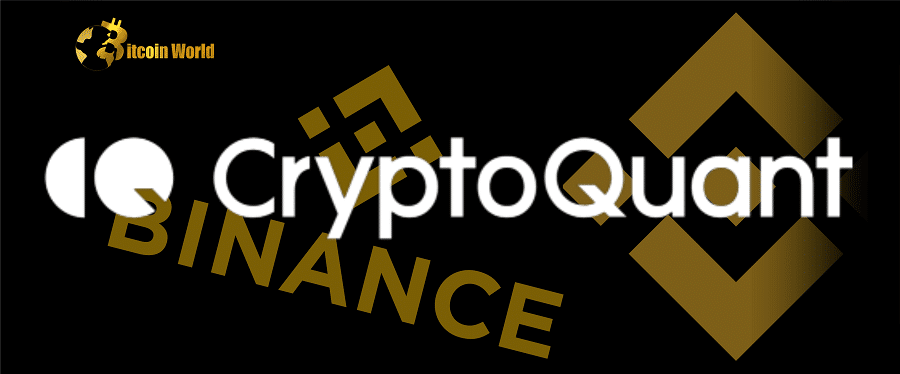The crypto world has been on edge, hasn’t it? Following the shocking collapse of FTX, everyone’s wondering: are our crypto exchanges safe? Binance, the world’s largest crypto exchange, has found itself in the spotlight, facing a wave of FUD (fear, uncertainty, and doubt) this week. But is there reason to worry? Let’s dive into the latest developments.
Binance Under Scrutiny: Why Proof of Reserves Matters Now More Than Ever
In the wake of FTX’s dramatic downfall, the spotlight has intensified on centralized crypto exchanges. Users and investors are understandably anxious about the security of their funds. Transparency and proof of reserves have become critical for restoring trust. Binance, being the industry giant, is naturally under immense pressure to demonstrate its financial health and reassure its user base.
To address these concerns, Binance released a proof-of-reserves report earlier this month. However, this report faced criticism for being an “Agreed-Upon-Procedure” rather than a comprehensive audit. Experts like John Reed Stark, former chief of the SEC’s Office of Internet Enforcement, pointed out that it didn’t fully assess the effectiveness of Binance’s internal financial controls.
CryptoQuant Steps In: A Deeper Dive into Binance’s Reserves
Enter CryptoQuant, a well-respected blockchain analytics provider. They’ve taken a closer look at Binance’s proof of reserves, publishing a report on December 14th to provide a more in-depth analysis. So, what did they find?
The Good News: CryptoQuant Confirms Binance Reserves are Largely Accounted For
- According to CryptoQuant’s analysis, Binance’s reserves appear to be robust.
- Their report states that Binance’s BTC liabilities (customer deposits) are 97% collateralized by exchange assets.
- Even better, when factoring in BTC lent to customers (which is a common practice in crypto exchanges), the collateralization ratio actually rises to 101%.
- This suggests that, based on CryptoQuant’s assessment, Binance holds sufficient assets to cover its Bitcoin liabilities.
Digging Deeper: Beyond Bitcoin – ETH and Stablecoins
CryptoQuant didn’t just stop at Bitcoin. Their analysis extended to other crucial assets held by Binance, including Ethereum (ETH) and stablecoins. The findings here are also reassuring:
- On-chain data indicates that Binance’s ETH and stablecoin reserves are not showing “FTX-like” behavior. This is a significant point, suggesting no red flags in the way these reserves are managed.
- CryptoQuant also highlighted that Binance has an “acceptable ‘Clean Reserve’.” What does this mean? It means that Binance’s own token, BNB, constitutes a relatively small portion of its total assets.
This last point is crucial. The over-reliance on native tokens was a major vulnerability in the FTX situation. A healthy exchange should have a diversified reserve portfolio, and it seems Binance, according to CryptoQuant, is in a better position in this regard.
BNB Holdings: What’s the Proportion?
Let’s talk numbers. Nansen, another blockchain analytics firm, estimates that approximately 10% of Binance’s reserves are held in BNB. Binance itself reports holding $60.4 billion in total assets in publicly disclosed addresses, with BNB accounting for $6.2 billion of that total. While 10% is not negligible, it’s arguably a manageable proportion, especially compared to scenarios where exchanges heavily rely on their own volatile tokens.
Navigating the FUD: $5 Billion Withdrawals and Market Reaction
Despite these reassuring findings, Binance has faced intense FUD this week, triggered by substantial withdrawals. On December 13th, reports surfaced of approximately $5 billion being withdrawn from the exchange. This understandably sparked fears of a liquidity crisis, reminiscent of the bank runs seen in traditional finance.
However, the situation appears to have stabilized quickly. Binance CEO Changpeng Zhao (CZ) addressed the concerns, stating that the outflow, while significant, wasn’t even among the top five largest for the exchange. This suggests that Binance’s operational capacity remained strong even under pressure.
CZ’s Take: Self-Custody and User Responsibility
Adding another layer to the conversation, CZ also touched upon the broader issue of crypto custody in a recent Twitter Spaces event. He argued that 99% of people are unprepared for self-custody of their crypto and are likely to lose it due to various factors. This highlights the ongoing debate about the balance between user responsibility and the role of centralized exchanges in safeguarding crypto assets.
Key Takeaways: What Does This Mean for Binance and the Crypto Market?
- CryptoQuant’s audit provides a degree of reassurance regarding Binance’s proof of reserves, backing up the initial report by Mazars.
- Binance’s reserves appear to be well-collateralized, particularly for Bitcoin, and its ETH and stablecoin holdings don’t exhibit worrying patterns.
- The proportion of BNB in Binance’s reserves seems manageable compared to total assets, mitigating risks associated with native token dependency.
- Binance weathered significant withdrawals, demonstrating operational resilience.
- Transparency and independent audits are crucial for building trust in centralized crypto exchanges, especially after the FTX debacle.
Looking Ahead: Transparency is the Name of the Game
In conclusion, while the crypto market remains volatile and vigilance is always necessary, the CryptoQuant audit offers a positive signal for Binance. It underscores the importance of proof of reserves and independent verification in building confidence in the crypto space. For centralized exchanges, transparency is no longer optional – it’s the foundation for long-term sustainability and user trust. As the industry matures, expect to see even greater emphasis on accountability and robust auditing practices.
Disclaimer: The information provided is not trading advice, Bitcoinworld.co.in holds no liability for any investments made based on the information provided on this page. We strongly recommend independent research and/or consultation with a qualified professional before making any investment decisions.


